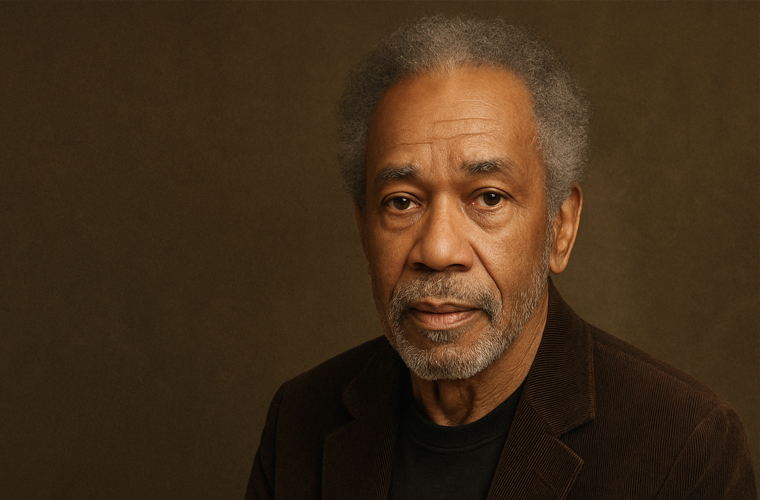A Life in Art, Activism, and Exile
Lennox Alison Raphael (September 4, 1939 – November 27, 2023) was a Trinidadian-born poet, playwright, journalist, painter, and political activist whose multifaceted career spanned continents, countercultural movements, and creative collaborations.
Born in Port of Spain, Trinidad, to Sidney Lionel Raphael, a policeman and cocoa plantation owner, and Amy Raphael, he was one of six children. As a teenager, Raphael honed his journalistic skills at The Guardian in Trinidad before forgoing a college scholarship in the UK to join The Gleaner in Kingston, Jamaica, where he reported on the island’s burgeoning independence era.
In the early 1960s, he and his first wife, the American artist Maryanne Raphael (née Patterson, born 1938), gained fame as collaborative painters under the moniker LENMAR during a celebrated stint in Rio de Janeiro, Brazil, where they drew crowds akin to rock stars. Their peripatetic life took them to Morocco and beyond, landing in New York City in the mid-1960s, where Raphael immersed himself in the city’s avant-garde and radical scenes.
In Manhattan, Raphael became a fixture of the late-1960s counterculture, contributing regularly to the underground East Village Other, editing for the influential Umbra Workshop alongside figures like Ishmael Reed and Steve Cannon, and engaging with the experimental Fluxus collective.
His poetry readings drew luminaries such as Allen Ginsberg, William S. Burroughs, and Calvin Hernton, while his activism aligned him with the Yippies—befriending Abbie Hoffman and Jerry Rubin—and extended to educational outreach through Herb Kohl’s Teachers & Writers Collaborative in New York public schools.
A close friend of John Lennon and Yoko Ono, he joined the Plastic Ono Band as a tambourine player, performing at the 1971 John Sinclair Freedom Rally. Raphael’s incisive journalism included a landmark 1967 Harper’s interview with Ralph Ellison, co-authored with James Thompson and Steve Cannon, and his 1963 essay “The West Indian Syndrome: To Be or Not To Be an American Negro,” published in Negro Digest, which explored the identity struggles of Caribbean immigrants in America.
His breakthrough play, Che! (1969), a provocative bio-drama on Che Guevara, sparked obscenity arrests at the Free Store Theatre due to its nudity and sexual content; the ensuing trial, supported by the international art community, affirmed its First Amendment protections and ran for over a year as a scandalous hit.
Other works included plays like Blue Soap and Waiting for Mick Jagger (the latter drawing a visit from the Rolling Stones frontman), the co-authored memoir Garden of Hope: Autobiography of a Marriage (2006) with Maryanne, and contributions to anthologies such as Winter Tales: Men Write About Aging (2011). He also featured in friends’ works, including Hunter S. Thompson’s Fear and Loathing on the Campaign Trail ’72 and Robert Gover’s Voodoo Contra.
Raphael’s perambulations continued into political turbulence and later reinvention. Returning to Trinidad with his second wife, artist Manuela “Cuqui” Aponte, he realized a lifelong dream by founding The Theatre, producing his plays amid the island’s cultural ferment.
In the early 1980s, he entered politics as the Organization for National Reconstruction (ONR) candidate for Port of Spain East, enduring arson (suspected on his theater) and violent attacks from political rivals that hospitalized him.
Fleeing to Denmark in the late 1980s, he married Danish economist Karen Helveg Petersen in 1993 and emerged as a Copenhagen arts leader, curating events like the Berlin Soup festival with Jesper Dalmose and collaborating on song cycles and operas with composer Carman Moore—including the unfinished Waiting for Obama—often featuring singer Lotte Arnsbjerg, whom he mentored.
In 2004, he wed Danish obstetrician Helga Gimbel, with whom he shared a historic 1789 home in Jægerspris, maintaining a ritual of year-round ocean swims. Holding a PhD in film, Raphael taught internationally, including at the American International School in Kazakhstan earlier in his career, and completed his experimental novel Naipaul’s Country just before his death.
Predeceased by his third wife, Karen, he is survived by his fourth wife, Helga, six children—Raphael, Ion Birch, Sesame, Sasa, Jah, and Papaya Raphael—and 11 grandchildren. Raphael’s life embodied a restless fusion of West Indian roots, American radicalism, and European introspection, leaving a legacy of boundary-pushing art that celebrated—and critiqued—the human spirit’s quest for freedom.

